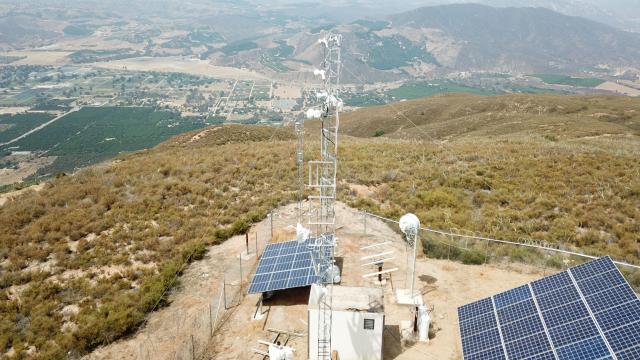Much of the news about the U.S.’s internet infrastructure is abysmal. Millions of urban and rural Americans either can’t afford or don’t have reliable access to high-speed internet. The finical reprieve so many ISPs offered customers at the start of the covid pandemic is long gone. A massive spike in covid cases is forcing businesses and schools to close again. And in the middle of it all are underserved and unserved communities, relying on sub-par internet to share among multiple family members to keep up with their education and, hopefully, jobs. With all that in mind, any bit of good news in this area is a little ray of hope. That’s what the Tribal Digital Village Network (TDVNet) and Internet Society Foundation, a non-profit that awards grants to its chapters around the world, is doing for over 9,000 Native American tribal members in California.
With a $US30,000 ($40,857) grant to San Francisco Bay Area Chapter of the Internet Society Foundation, 2,200 tribal homes across 13 tribal nations will receive access to internet or better internet for the first time over the next 6-12 months. Currently, 400 of those homes connect to the internet through the TDVNet. The money provided from the Internet Society Foundation will not only go toward making those existing connections better by adding more bandwidth, but it will increase the number of homes that can connect to the internet through TDVNet.
“We’ve been working for nearly two decades to improve internet access on tribal land. Kids need to get online to attend school and do homework during COVID-19, parents need the internet to search for jobs,” said Matthew Rantanen, the Director of Technology of the Southern California Tribal Chairmen’s Association (SCTCA) Tribal Digital Village. The SCTCA is a non-profit established 1972 to serve the many needs of its tribal members and descendants in the San Diego County urban areas.
Out of those 9,000-plus tribal members, 1,500 are students who will gain high-speed internet access through libraries and resources centres — students who live on a reservation in the remote mountains of eastern San Diego County and currently get their fibre internet delivered via microwave from a tower over six miles away, for instance. Microwave internet is one of several “last mile” internet services and is generally cheaper than wired broadband. But like satellite internet, it can be adversely affected by bad weather. Lots of people connecting to a single tower can also significantly reduce bandwidth speeds. The further you are from the tower, the slower speeds can get, too.
“As we are expanding to thousands of homes, we need the ability to bring the capacity of our fibre closer to the bulk of our reservations. That is why we’re grateful for the Internet Society Foundation’s Beyond the Net Grant program,” added Denis Turner, Executive Director of the Southern California Tribal Chairmen’s Association. “In the next year, there’s going to be a major improvement to the capacity in access to the internet in our communities and it will be thanks to this grant.”
While it’s undoubtedly excellent news that these underserved and unserved families will get improved internet access (although ideally it should have happened prior to the start of the pandemic), it’s still a grim reminder of California’s failure to adequately address the digital divide in the state.
On August 30, 2020, California state legislature inexplicably chose to kill the SB 1130 “broadband for all” bill that would have turned the state’s legacy communications infrastructure (DSL) into an affordable, multi-gigabit fibre network to reach 1.7 million households with school-aged children that do not have broadband internet. The bill’s author, Senator Lena Gonzalez (D-Long Beach), gained the support of not only the California Senate and Governor Gavin Newsom, but over 50 groups and organisations, including the Electronic Frontier Foundation , Consumer Reports, AARP, League of Cities, and many small and large school districts.
The Senate voted 30-9 to pass the bill — yet Assembly leadership, after trying to make amendments to the bill that would have favoured major ISPs even more than they already are and stalling negotiation attempts, moved the bill to the inactive pile just before the session ended.
“The state’s ability to address the COVID-19 pandemic and the unprecedented fires we’re facing require us to stay as connected as possible. We still have time to do that, if the Assembly shows the leadership to reverse course and do the right thing,” said Senator Gonzalez in a statement after the Assembly’s decision. She cited a widely circulated story about two school-aged children using a Taco Bell’s internet to keep up with their school work — driving home the point that the Assembly was failing these children and millions of others. Pre-pandemic, those children probably would have used the internet at their school or local public library. But with schools and libraries just some of the many places with free internet still closed at the start of the fall semester, their options were limited.
Until the day comes when the internet is treated like a utility and every single person has affordable, reliable access to internet that’s at least the equivalent of a Taco Bell’s, disadvantaged communities will need organisations like the Internet Society Foundation to bridge the digital divide, piece by piece.
